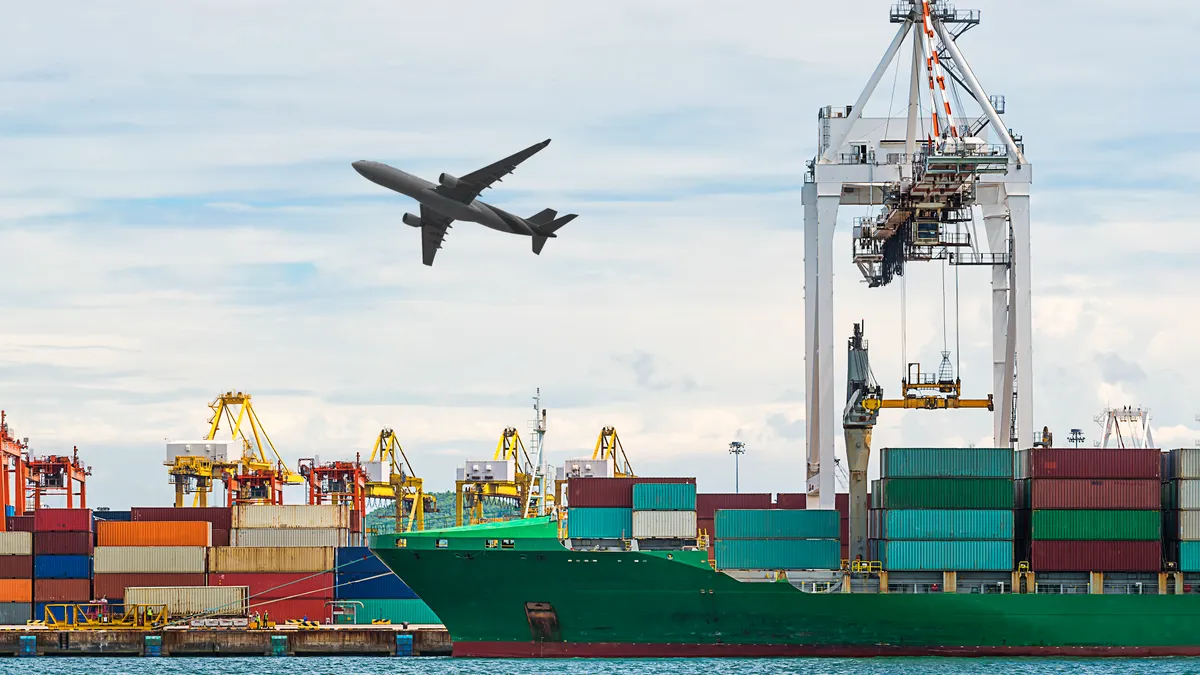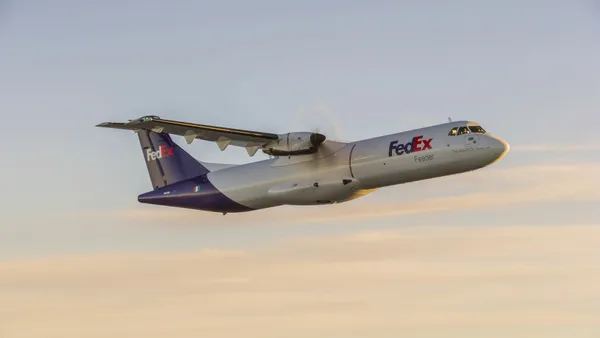After an ostensibly good year for the U.S. economy in 2018, 2019 is looking to be quite a reality check for all four freight modalities, to varying degrees.
In fact, analysts at the Cass Freight Index insist that the freight industry has contracted before the economy (and not after) without fail since reliable data became available soon after World War II.
In its November report, Cass analysts wrote: “The hard data of physical goods flow, which is uninfluenced by human emotion, confirms that people are still making things, shipping things, and buying / consuming things.”
Still, the index has begun to recommend caution and close attention to forces that have the potential to turn the tides on recent good times. Cass mentions the ongoing trade war casting a shadow of uncertainty over much of U.S. foreign trade and "throttling" volumes in some key areas like agricultural exports.
We see a few more storm clouds on the horizon for specific freight modes. These are some of the forces that freight carriers and shippers need to keep a weather eye on in 2019.
-
Trucking: The great cooldown
-
Ocean shipping: IMO 2020 makes for choppier waters
-
Rail: Changes present opportunity
-
Air: A war of words and nothing more
It's counter-intuitive that a booming economy could be trouble for any industry, but after a record-smashing 2017 and 2018, trucking is overdue for a cooldown Between a retail resurgence and a trade war pushing purchasing up on the calendar, shippers are likely looking forward to a less competitive environment.
The extremely low unemployment rate means the driver shortage is not likely to go away, even if the record truck orders placed in 2018 are fulfilled in 2019.
Carriers and retailers are getting creative and working to hone in on what gets (and keeps) drivers behind the wheel, but these fixes are expensive.
The Cass Index isn’t predicting inflation in prices, but so far it appears carriers will have to spend to keep operating at current volume, which may cancel out any downward pressure on pricing that supply and demand can provide.
Ocean shippers are headed into a storm in 2019. Acceptable sulfur emissions levels from ocean liners is set to decrease to 0.5% on Jan. 1, 2020, per International Maritime Organization regulations.
For carriers, this means some tough decisions on what ships to upgrade to take on new fuel sources, what ships to outfit with scrubbers to filter emissions and what to scrap. Whatever they choose, announcements of new fees to pass some of the cost onto shippers have been rolling out for months, and we’re already starting to see what these price increases will look like on aggregate.
Freightos predicted ocean freight rates could rise 5% to 10% in the first week of January. As of January 6, rates to ship a container from China / East Asia had risen to $2,003 per TEU for the West Coast of North America, up from $1,722 the week before, and $3,137 for the East Coast, up from $2,779. Even before this week, December’s prices were uncommonly high.
A.T. Kearney analysts go so far as to predict that this one regulatory change will cause unpredictable ripples beyond the shoreline as well.
"Given the low level of readiness to comply with these regulations, the global shipping industry will undergo a disorderly and disruptive transition to the new environment in 2019. The implications will go far beyond the shipping industry," according to the A.T. Kearney Global Business Council’s "Year-Ahead Predictions 2019" report. In addition, the report portends that all fuel prices will be more volatile as a result.
The significant growth area for railroads in recent years has been intermodal volumes, and these have the potential to be affected by the changing winds of trade just as much as agricultural freight or other bulk shipments.
"What happens in 2019 will depend on how the domestic and global economies hold up and the policies — particularly monetary and trade — that come out of our legislative and executive branches,” said Association of American Railroads Senior Vice President of Policy and Economics John T. Gray in a recent traffic report.
Several Class I railroad CEOs told Progressive Railroading that tight trucking capacity would bolster intermodal volumes in 2019, but Nick Little, director of railway education at the Center for Railway Research told Supply Chain Dive in an email that that conversion hasn’t happened in the way CEOs would like yet.
"The lack of substantial modal transfer from trucks, despite that industry’s problems, remains a potential longer-term problem," said Little.
What’s unclear is how railroads will react to any kind of downshift in volume. The CEOs of Canadian Pacific, Union Pacific and Norfolk Southern are implementing or have already implemented precision scheduled railroading this year, presenting an opportunity to increase efficiency while offering customers a better view of where their goods are — information that railroads have traditionally kept closely guarded according to shippers and observers.
"Much more data is now available to railroads from PTC [positive train control], IoT and other technological improvements. Sharing this data to make better, more informed decisions could enable customers to marginally reduce their cost of inventory holdings, something that is becoming a critical focus along a supply chain as interest rates rise. Customers may fear that this data will be used only to improve the railroads’ OR through rate manipulation rather than shared broadly for a common good," said Little.
One thing that likely won’t be moving beyond words in 2019 is the battle for air freight supremacy. Amazon has been moving into the air space in recent years causing some speculation that UPS and FedEx need to watch their backs.
In early December, Morgan Stanley analysts wrote, "We think the market is missing the risk Amazon Air poses to UPS/FDX growth," in a research note, projecting a 10% potential revenue loss for UPS and FedEx by 2025.
Amazon is indeed building a $1.5 billion hub in the Cincinnati area, which will be operational by 2020 and completed five to seven years after that. Once built, the hub will be able to accommodate 100 aircraft and 200 daily flights, according to a note Armstrong & Associates sent to Supply Chain Dive. In late December, Amazon Air leased an additional 10 40 Boeing 767.
To put this in perspective, UPS owns and leases more than 550 aircraft globally and flies more than 2,200 domestic and international flights.
In terms of air service infrastructure, Amazon is years behind either UPS or FedEx and though some scenarios for "encroachment" have been thrown out by analysts, both UPS and FedEx appear confident that Amazon Air is unlikely to disrupt the air cargo status quo.
"We look at Amazon as a wonderful company in service and they're a good customer of ours. We don't see them as a peer competitor at this point in time for many reasons. We think it is doubtful that, that will be the case," said FedEx CEO Fred Smith on a December call with analysts.















